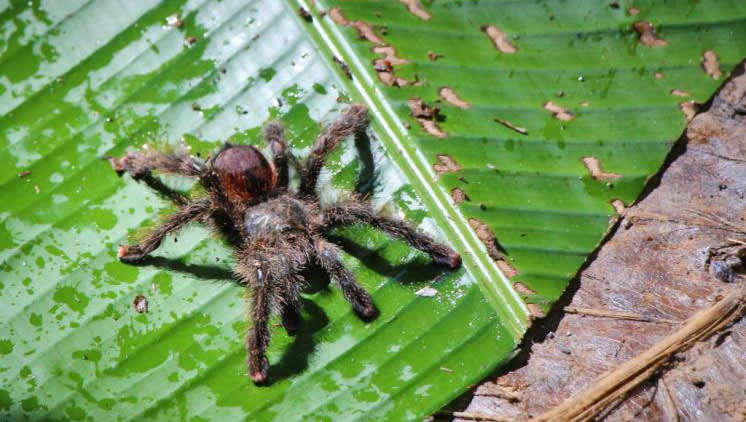
10 Cool Creepy Crawlies Found in the Amazon Rainforest
Widely considered among the most remarkable natural attractions on the planet, the Amazon River Basin is home to the world’s largest tropical rainforest and at least 10% of its known biodiversity.
There are around 30 million species in the 6.7 million square kilometer Biome, with thousands of new species discovered there each year. One acre of Amazon Rainforest is estimated to contain as many as 70,000 species of insects (scientists once found 700 different species of beetle on just one tree).
The birds, monkeys, reptiles and amphibians of the Amazon may get most of the attention from wildlife lovers. But we think these 10 creepy crawlies are equally cool and well worth watching out for as you venture out into the rainforest.
Assassin Bug
These alien-looking predators are related to the plant-eating shield bug. But they’ve adapted a piercing proboscis with which they feed upon their victims (ants and bees are their favorites). The assassin skills for which they are named include coating themselves with ant carcasses to disguise their pheromones and covering their legs with tree sap and grabbing bees out of mid-air with their sticky claws. They may not look like much, but these clever carnivores have some seriously deadly moves.
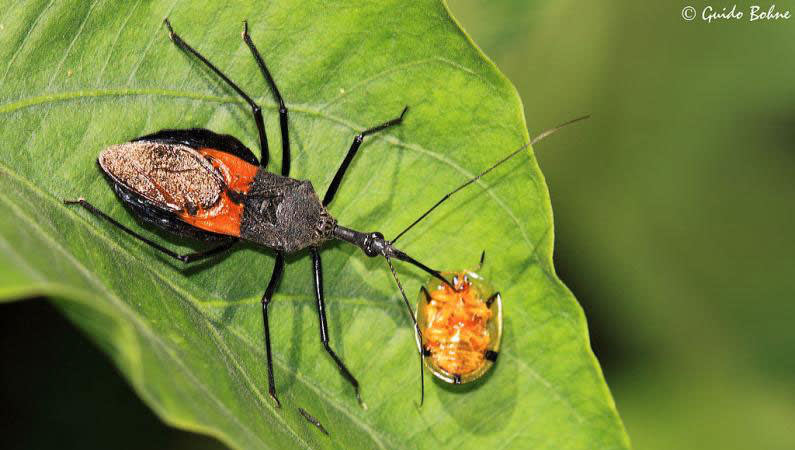
Bullet Ant
Commonly found in wet neotropic areas throughout Central and South America, these ants are well-known for their massive size (up to 1.2 inches in length) and its venomous sting. It’s also known as the 24-hour ant, because that’s how long it typically takes to get over the pain. Brazil’s Sateré-Mawé people use these ants in an initiation rite for male warriors, putting hundreds of them in a glove made of leaves that the wearer is encouraged to wear for 10 minutes.
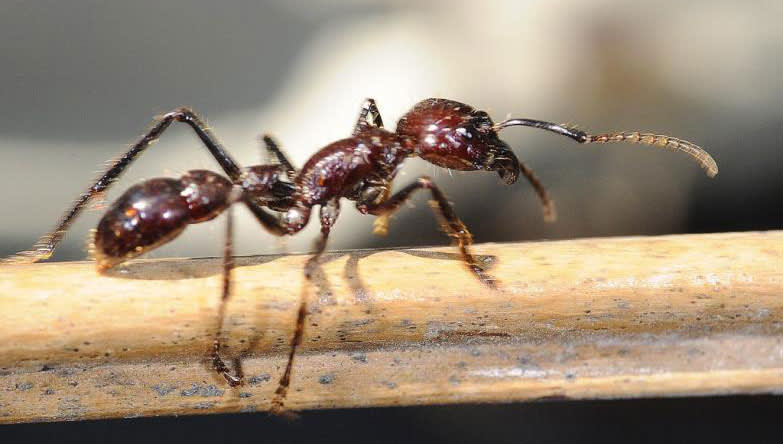
Jewel Caterpillar
Sometimes referred to as “the nudibraches of the forest,” these vividly colored wonders are rarely seen because they’re so tiny (about a half-inch long) and quick (for a caterpillar). Their gorgeous glass-like colors belie the fact that they’re actually quite gooey, with protective “spikes” that provide defense from predators. While the ant or wasp is dealing with a mouthful of gummy gunk, the future moth makes his hasty getaway.

Jumping Stick
This skinny beanpole looks like the more common giant walking stick insect. But it’s more closely related to the Locust, and is named for its ability to jump and kick like a kung fu master. Its hind legs are 2.5 times as long as its front and middle legs, allowing it to propel its 2.6-inch body up to 3 feet in a single bound. They’re also known for their odd, elongated faces, with a grasshopper-like mouth and large eyes on a stalk that help it look for predators and attract mates.
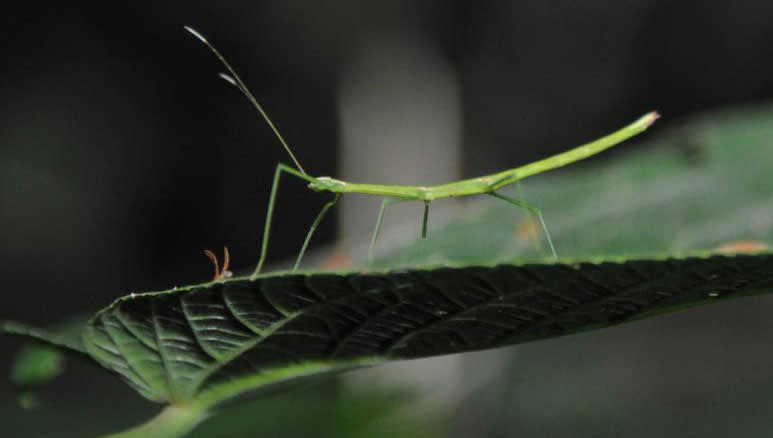
Lantern Fly
Don’t let the name fool you: This odd-looking insect looks more like a moth than a fly, and their massive peanut-shaped heads don’t light up. They have vivid spots on their wings that some people believe help to scare off predators by mimicking the eyes of a much larger animal. There’s also a myth in certain local populations that if the bug bites someone (which it doesn’t), they’ll die if they don’t have sex within a day. I wonder how many young Amazonian men have tried using that line?
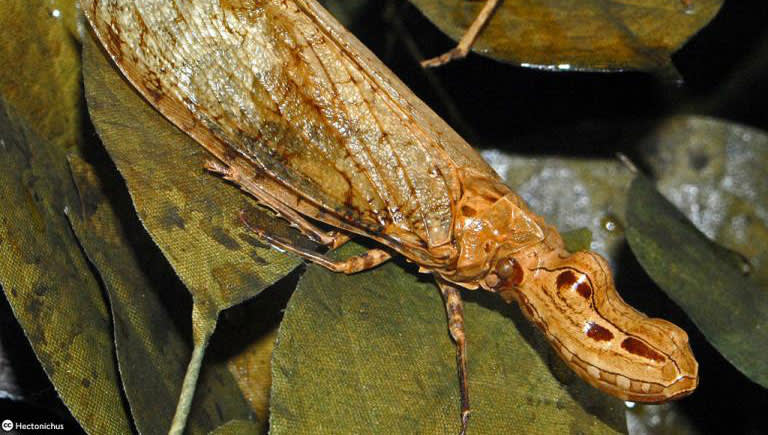
Fishing Spider
This Amazon species is both big and beautiful, growing up to 8 inches and boasting a green, gold and white body. Semi-aquatic, they’re most often found waiting at the edge of a pool or stream. They wait for ripples that advertise prey (insects, tadpoles and even small fish), then run across the surface to grab it and inject their venom. Some species can even encase themselves in a silver air bubble and climb beneath the water.
Leaf-Cutter Ant
There are 47 species of leaf-chewing ants. By the time you leave the Amazon, you may feel as if you’ve had to sidestep every one of them. You’ll most often see them crossing paths while carrying the large pieces of fresh vegetation by which they earned their name. They use them as nutritional substation for fungal gardens for their underground colonies. Containing up to 8 million individuals and stretching up to 6,400 square feet, they’re the second largest and most complex animal societies on the planet (after humans).
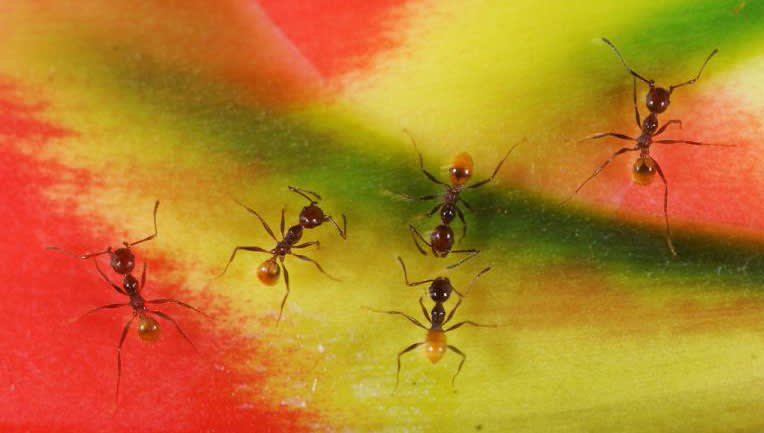
Leaf-Mimic Katydid
Closely related to crickets and grasshoppers, katydids get their name from the noises both sexes make by rubbing their legs together (which sounds like “kay-tee-did”). The tempo of this stridulation is dictated by ambient temperature: It’s said that you can count the number of chirps heard in 15 seconds, add 37, and get a fairly accurate temperature reading on the Fahrenheit scale. With veined bodies resembling a green leaf, they’re masters of the art of camouflage.
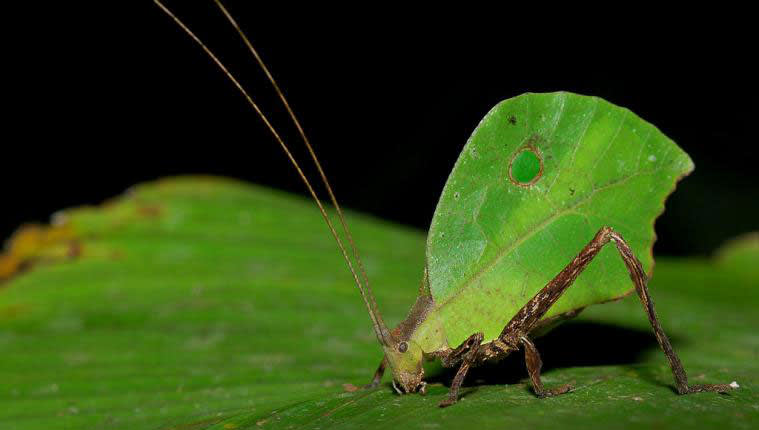
Longhorn Beetle
There are over 26,000 species in the Cerambycidae family, which are occasionally referred to by the awesome nickname “longicorns.” They’re characterized by their extremely long antennae, which are typically as long or even longer than the beetle’s body. They’re often vividly colorful, with some mimicking ants, bees and wasps. The most impressive species, the rare titan beetle, is widely considered the world’s largest insect, with a maximum body length of around 6.6 inches.
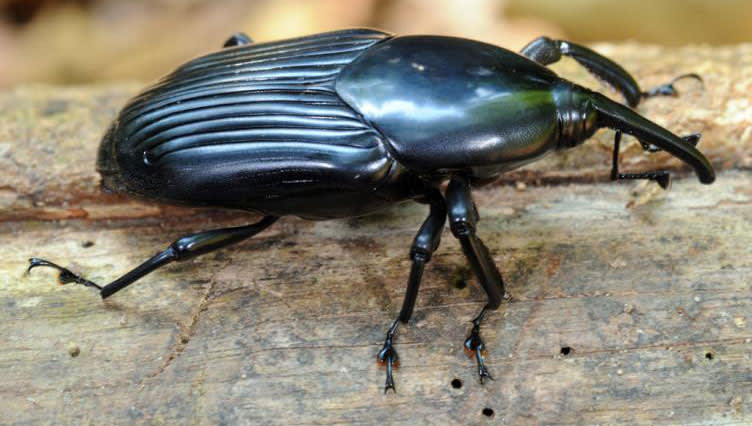
Tarantula
If you’re afflicted with arachnophobia (fear of spiders), be forewarned that the Amazon is relatively filled with these fuzzy-legged phenoms. The good news is that the most commonly seen species, the pinktoe tarantula, is relatively harmless and rarely bites. Look for them in trees everywhere, especially during nighttime tours. The largest species, the Goliath Tarantula, can grow up to a 12-inch leg span and is considered a treasured delicacy by some indigenous tribes.
